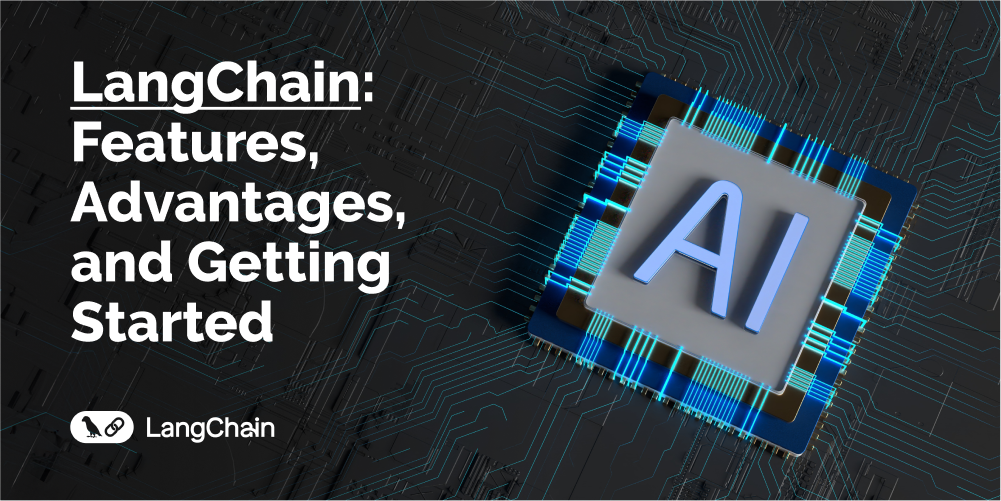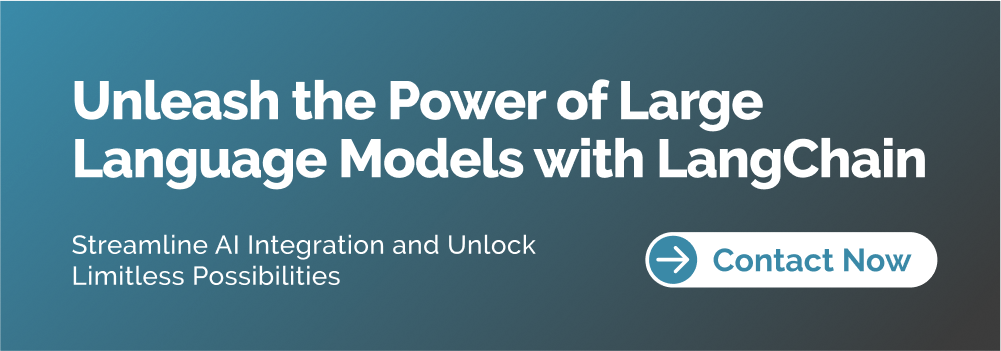AI, zBlog
What Is LangChain? Features, Advantages, and How to Begin

Introduction
In the rapidly evolving landscape of artificial intelligence (AI) and natural language processing (NLP), a new player has emerged, captivating developers and researchers alike. LangChain, an open-source framework designed to build applications with large language models (LLMs), has swiftly gained traction as a powerful tool for harnessing the immense potential of these cutting-edge technologies.
This comprehensive guide delves into the intricacies of LangChain, exploring its features, and advantages, and providing a roadmap. Whether you’re a seasoned AI/ML professional or a curious developer looking to unlock the power of LLMs, this article will equip you with the knowledge and insights you need to navigate the digital frontier with confidence.
Introduction to LangChain: Bridging the Gap Between AI and Applications
LangChain is a Python library that serves as a bridge between large language models and real-world applications. It aims to simplify the integration of LLMs into various workflows, enabling developers to harness their immense potential easily.
At its core, LangChain provides a modular and composable framework that allows developers to build sophisticated applications by combining different components, such as language models, data sources, and processing steps. This modular approach promotes code reusability, facilitates rapid prototyping, and streamlines the development process, enabling teams to focus on delivering innovative solutions rather than grappling with complex integrations.
Features of LangChain: Empowering Developers with Flexibility and Efficiency

LangChain boasts an impressive array of features that cater to the diverse needs of developers and researchers working with LLMs. Here are some of the key features that make it a standout in the field:
- Modular Architecture: LangChain’s modular design allows developers to easily swap out components, such as language models, data sources, and processing steps, without disrupting the entire application. This flexibility enables rapid experimentation, iteration, and adaptation to evolving requirements.
- Unified Interface: Despite supporting multiple LLMs from various providers, LangChain offers a consistent and unified interface, abstracting away the complexities of interacting with different models. This seamless integration empowers developers to focus on building applications rather than grappling with model-specific intricacies.
- Memory Management: LangChain simplifies the management of conversational memory, enabling applications to maintain context and continuity across interactions. This feature is particularly valuable for building chatbots, virtual assistants, and other conversational AI systems.
- Agent Functionality: LangChain introduces the concept of “agents,” which are autonomous entities capable of carrying out complex tasks by combining multiple LLM queries, data retrieval operations, and processing steps. Agents can be customized and extended, allowing developers to create sophisticated AI-driven workflows.
- Extensive Documentation and Examples: LangChain’s comprehensive documentation and an extensive collection of examples and tutorials make it accessible to developers of all skill levels, fostering a vibrant and supportive community.
Advantages of Using LangChain: Unlocking the Power of LLMs

Adopting LangChain in your Artificial Intelligence and Machine Learning projects offers a multitude of advantages, empowering developers and organizations to unlock the full potential of large language models. Here are some of the key benefits:
- Accelerated Development: By abstracting away the complexities of integrating and managing LLMs, LangChain significantly reduces development time and effort, enabling teams to focus on delivering value-added features and functionalities.
- Scalability and Flexibility: LangChain’s modular architecture and support for multiple LLMs ensure scalability and flexibility, allowing applications to adapt to changing requirements and evolving language models seamlessly.
- Improved Productivity: With LangChain handling the intricacies of LLM integration and memory management, developers can concentrate on building innovative solutions, boosting overall productivity, and fostering a more efficient development lifecycle.
- Enhanced User Experiences: By enabling the creation of sophisticated conversational AI systems and context-aware applications, LangChain empowers developers to deliver exceptional user experiences that seamlessly blend human-like interactions with AI-powered capabilities.
- Future-Proof Investments: As the field of AI and LLMs continues to evolve rapidly, LangChain’s modular design and commitment to keeping pace with the latest advancements ensure that your investments in LangChain-powered applications remain future-proof and adaptable.
Getting Started: A Step-by-Step Guide
Now that you understand the power and potential of LangChain, it’s time to embark on your journey to harness this remarkable framework. Follow these steps to get started:
- Set up your Development Environment: Begin by installing Python and setting up a virtual environment. LangChain is compatible with Python versions 3.7 and above.
- Install LangChain: Use pip, Python’s package installer, to install the LangChain library by running the following command:
pip install langchain
- Choose your LLM Provider: LangChain supports a wide range of LLM providers, including OpenAI, Anthropic, Cohere, and more. Select the provider that best suits your needs and obtain the necessary credentials or API keys.
- Explore the Documentation and Examples: Dive into LangChain’s comprehensive documentation and explore the extensive collection of examples and tutorials. These resources will guide you through the framework’s core concepts, components, and best practices.
- Implement Your First LangChain Application: Start by building a simple application that leverages LangChain’s capabilities. This could be a basic conversational AI system, a question-answering application, or a custom agent tailored to your specific use case.
- Iterate and Expand: As you gain confidence with LangChain, gradually expand your application’s functionality by incorporating additional components, such as memory management, data retrieval, and advanced processing steps.
- Join the Community: Engage with the vibrant LangChain community by participating in forums, attending meetups, and contributing to the open-source project. This will not only enhance your learning experience but also allow you to stay informed about the latest developments and best practices.
Elevating Your IT Services

In the rapidly evolving IT services landscape, harnessing the power of cutting-edge technologies like LangChain can provide a significant competitive advantage. By seamlessly integrating LLMs into your workflows and applications, you can deliver innovative solutions that enhance customer experiences, streamline processes, and drive business growth.
Partnering with Trantor can further amplify the impact of LangChain on your organization. Our team of experts will work closely with you to devise strategies that leverage the power of LangChain and data-driven marketing analytics, enabling you to conquer the digital frontier and outpace your competitors.




